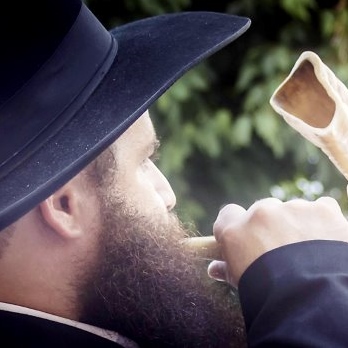
News

Fear and trembling about High Holidays services
JOSHUA RATNER
As a rabbinical colleague wrote, Elul itself carries spiritual significance as a time to begin soul-searching and stock-taking of our individual behaviours over the past year.
Elul carries with it a particular sense of urgency, if not dread, for those officiating at High Holidays services. Summer vacation is now officially over. The lists of details for the myriad services that will take place – who is leading each reading, getting each aliyah, opening or closing the ark – can be truly staggering.
Searches begin in earnest for those pithy anecdotes or fascinating studies of human nature that were clipped from newspapers or dog-eared books we have been reading over the past year. Rabbis in smaller shuls now must co-ordinate with guest cantors, synagogue choirs or brush up on their own chanting abilities.
And, of course, there is the coup de grâce -the High Holidays sermons. A recent Pew Research Centre survey found that for those looking for a new house of worship, “Americans look first and foremost for a place where they like the preaching and the tone set by the congregation’s leaders.”
At 83 per cent, the quality of the sermon was the single highest factor in determining Americans’ choice of congregation. So, the pressure many rabbis feel, myself included, to craft and deliver sermons of high quality is tremendous.
But if I am honest with myself, the sermon actually is the easy part of transmitting meaning and content on the High Holidays. It is conveyed in the vernacular and crafted to connect, deeply and personally, with those in attendance. What is truly hard, and what really fills me with fear, is how to make the rest of the services resonate.
There are (at least) three fundamental challenges posed by the Yamim Noraim (Days of Awe) services. (I will speak specifically about Conservative Jewish services because those are the ones I am most familiar with.)
First is the sheer volume of Hebrew used during services. From Maariv on Rosh Hashanah Eve through Neilah on Yom Kippur, worshippers confront a relentless onslaught of Hebrew poetry and prose. While there are opportunities to inject English readings or inspirational messages (“kavanot”), these are usually the exception rather than the rule.
Why do we inundate ourselves with so much Hebrew? Because the machzor, the prayerbook we use for the High Holidays, simply has a ton of content and we know that most synagogue-goers only have a limited time span during which they will sit in the pews. This leaves two options: cut out some Hebrew and replace it with more English translations, or chant our way through the Hebrew as fast as we can so we can finish the service on time.
Since rabbis and ritual committees tend to decide on the content of the services, and simultaneously tend to be the most conservative when it comes to modifying prayer content, we wind up with a very Hebrew-centric service. To make matters worse, the Hebrew is often from mediaeval sources and differs in content from the Hebrew some may be used to from Shabbat or daily worship. This makes it even harder to follow.
Finally, when we do slow down for more melodic chanting, it often is done by a cantor or other prayer leader in a tune that is so stylised that it is difficult to join.
The second major challenge of our High Holidays services stems from the content of the liturgy. The key themes are repeated again and again to the point that it can be challenging to feel personal resonance the fifth time I decry my sins or proclaim God’s sovereignty. The liturgy is intentionally redundant to hammer home key themes (created at a time when liturgy was recited orally, not written down), but this redundancy raises the moral hazard of emotional boredom.
Another major component of the High Holidays liturgy is the use of liturgical poetry (“piyyutim”) that were comprised by skilled poets 1 000 or more years ago. Their poetry is subtle and relies upon an encyclopaedic knowledge of biblical references and connections that are incredibly challenging for modern audiences to unpack. With these raw ingredients, it is easy to see how the final prayer product often comes out dry and flavourless.
Perhaps the largest impediment to meaningful services, though, lies in the gulf between life experience and contemporary sensibilities on the one hand and traditional rabbinic theology on the other. I am sure there are some who embrace the liturgical themes of the High Holidays, especially the metaphor of G-d as King sitting in judgement on a heavenly throne.
But for the many others who reject this outlook, how can they derive meaning from the High Holidays while reciting a liturgy predicated on this very outlook?
If we adhere to different metaphors of G-d and different theologies about our relationship with G-d, are we left with a choice between cognitive dissonance or a wholesale rejection of the liturgy we have used for hundreds of years? Conversely, if we preserve the traditional liturgy, are we doing anything more than enabling a superficial and shallow spiritual experience?
Or, as I once wrote, do we intentionally seek out boredom to serve as a protective barrier during the High Holidays, so that we don’t have to get introspective?
I’m not sure how to resolve these questions, but I intend to spend much of Elul trying to do so.
Rabbi Joshua Ratner is the rabbi of Congregation Kol Ami in Cheshire, Connecticut.




